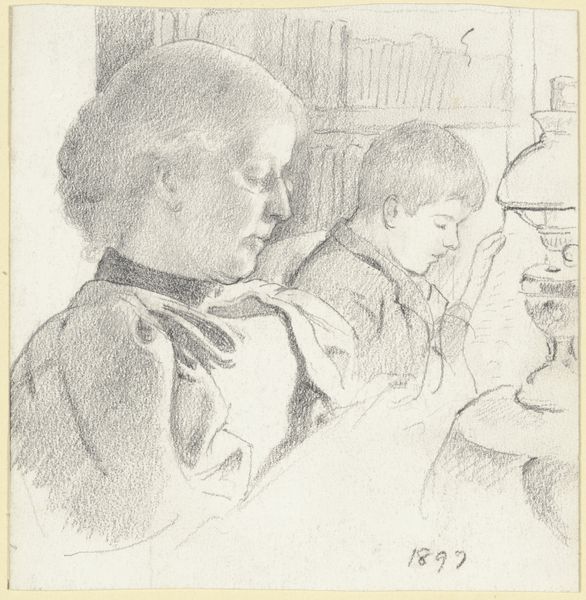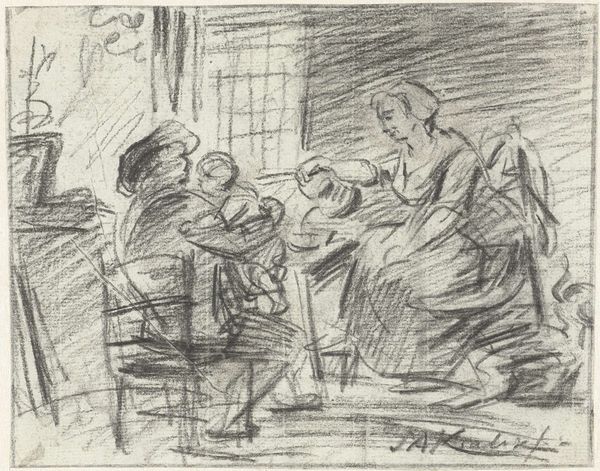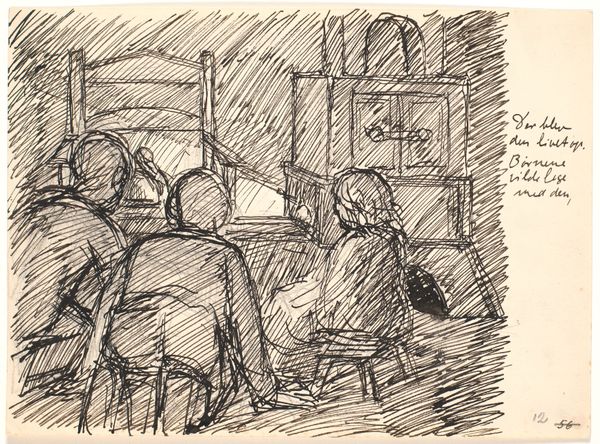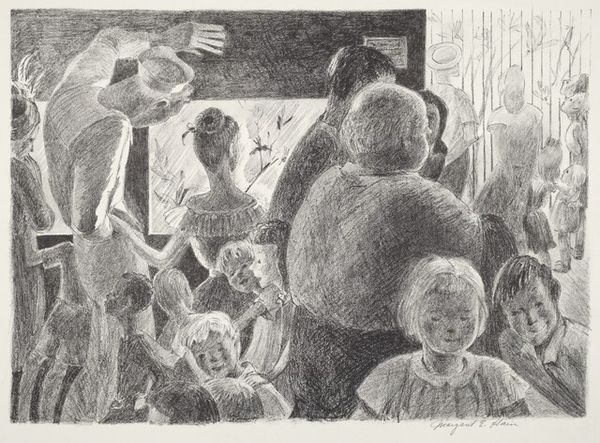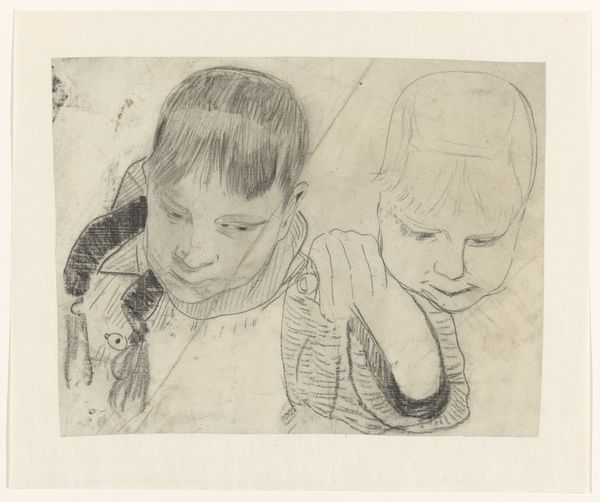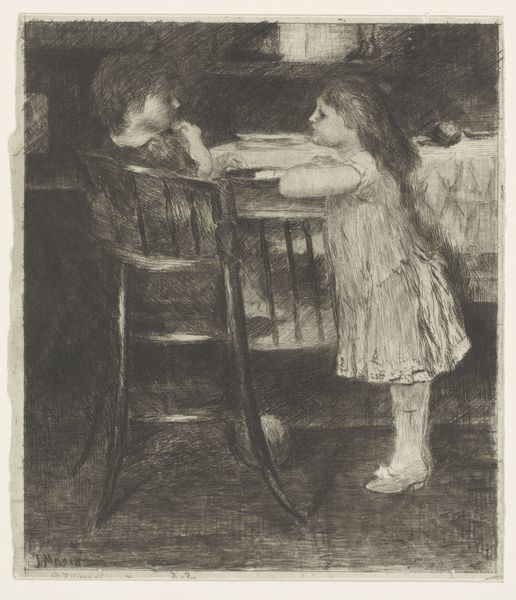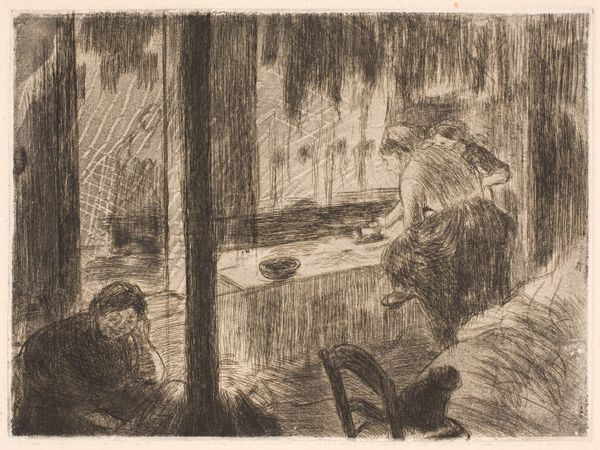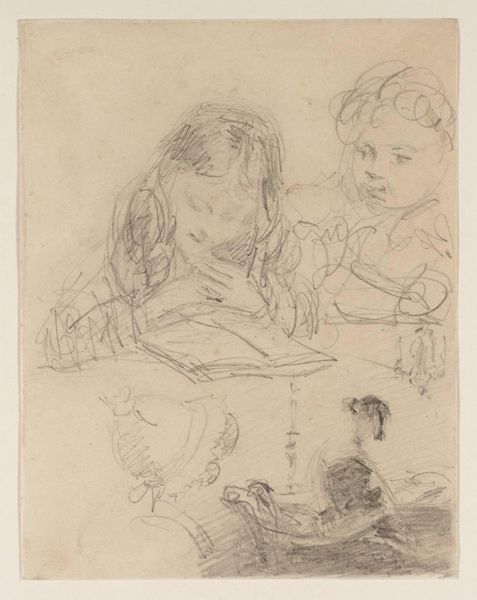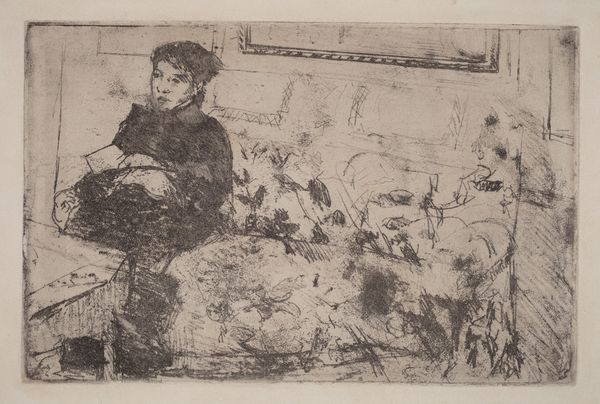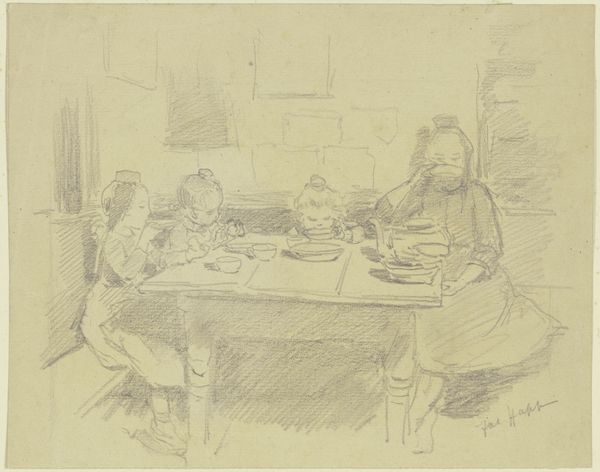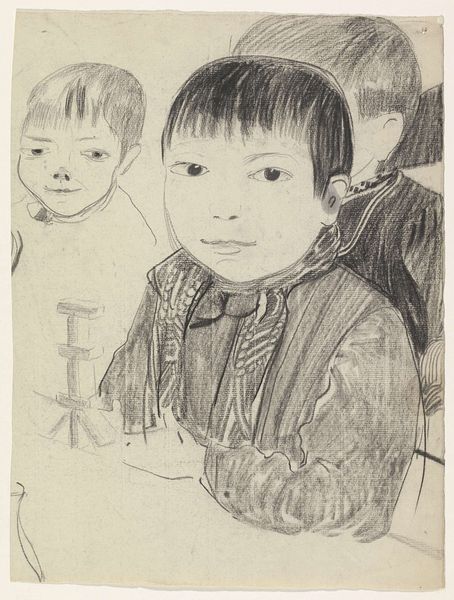
Dimensions: height 255 mm, width 350 mm
Copyright: Rijks Museum: Open Domain
Editor: This is Carel Adolph Lion Cachet's drawing, "Schoolklas," likely created between 1874 and 1945. It’s a pencil drawing on paper, and there’s a captivatingly raw and unfinished quality to it. What do you see in this piece beyond the obvious depiction of children in a classroom setting? Curator: It’s interesting to consider how images of childhood became more prevalent and sentimental in art during this period, aligning with evolving social attitudes toward education and family. This work captures a sense of institutional observation – we are given access to a classroom setting but kept at a distance. How do you think this distance shapes our understanding of the children and their learning environment? Editor: I guess it keeps it more objective? Less emotional maybe? What I’m curious about is how the ‘unfinished’ or sketch-like aesthetic impacts how we receive the piece; a polished painting would communicate something entirely different. Curator: Exactly. The loose style points to broader questions of access to education. It raises the question: is this school accessible and available to all children in society or only a few? Does the method of reproduction influence that availability? Considering Cachet’s choice of media, is there a commentary embedded within? Editor: That's a perspective I hadn't considered, linking the style and medium to social access and representation. The ambiguity now seems deliberate rather than accidental. Curator: The power of art lies in its ability to mirror, question, and shape the values of its time. Editor: Definitely. This really highlights how historical context deepens the narrative embedded in this seemingly simple drawing. Thanks!
Comments
No comments
Be the first to comment and join the conversation on the ultimate creative platform.
